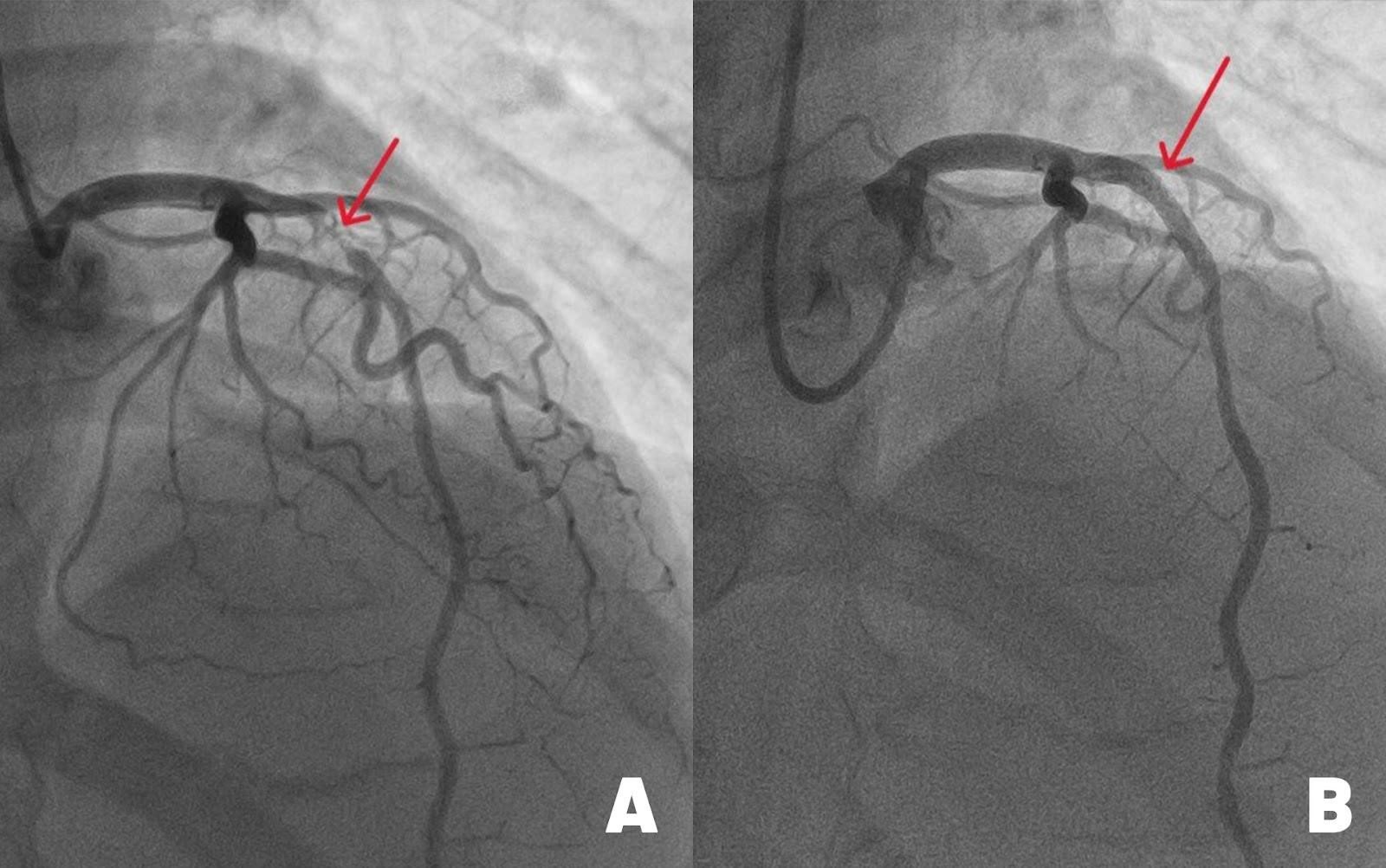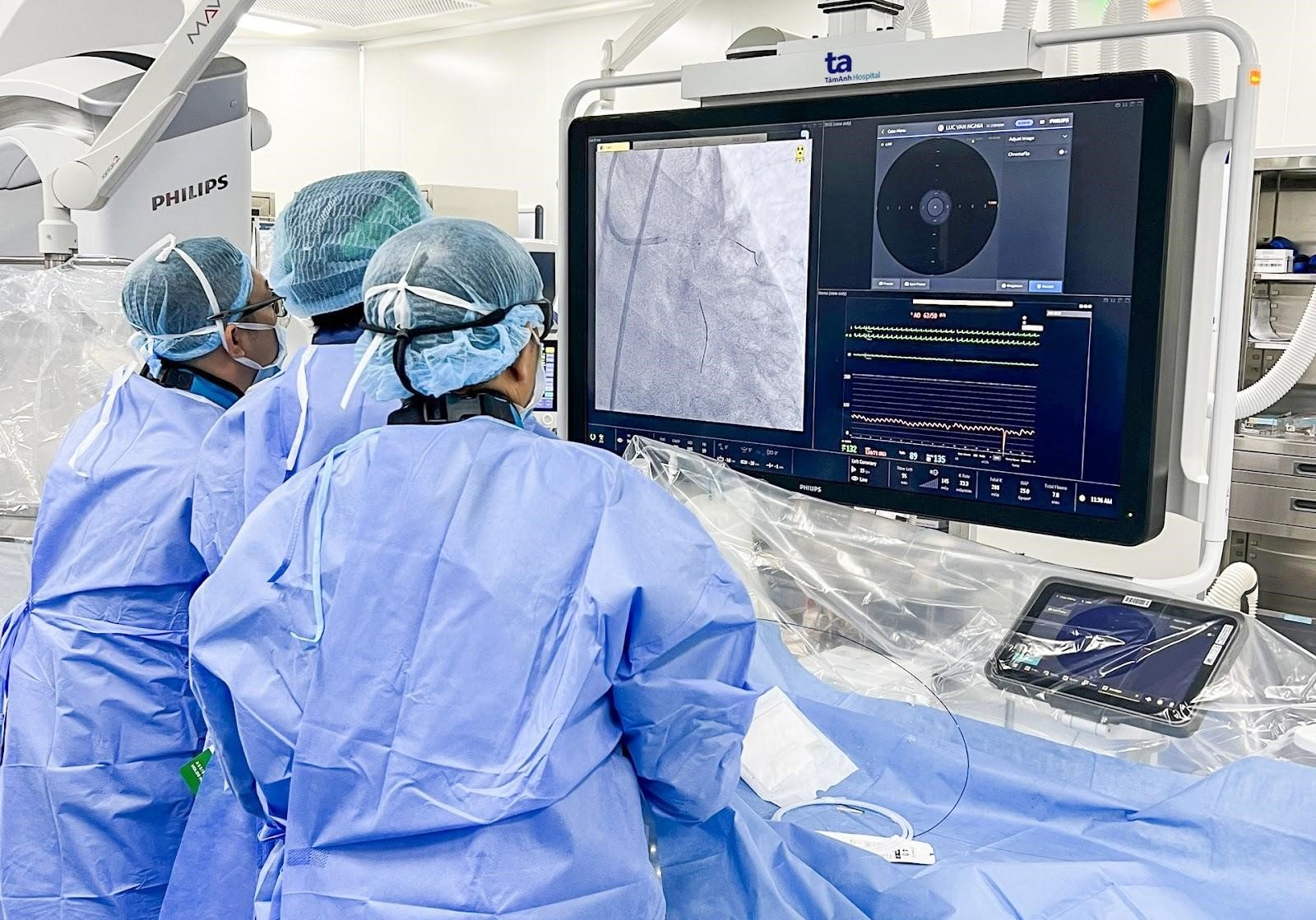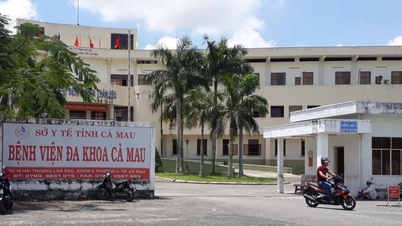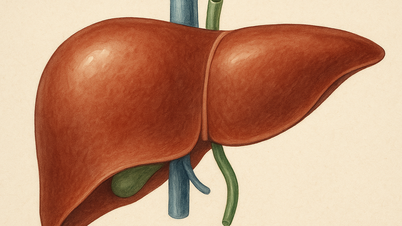Dr. Huynh Ngoc Long, Director of the Vascular Intervention Center, Tam Anh General Hospital, Ho Chi Minh City, shared that the emergency case of patient LB (Hoc Mon District, Ho Chi Minh City) is a rare case, with a rate of less than 1% and a lucky factor. If not taken to the hospital because of appendicitis, the patient would not know that he was about to have a complete blockage of the coronary artery (the main blood vessel that nourishes the heart). Although he had symptoms of chest tightness before, these symptoms were not specific and not frequent, so the patient was subjective and did not go to the doctor. If there was just a few more days of delay, if the blood flow through the anterior interventricular artery was completely blocked, the patient would have a very high risk of sudden death.
In October 2022, Mr. B. began to experience chest pain during moderate exertion, but only about once or twice a month. He thought this was a normal symptom so he did not go to the doctor.
Recently, Mr. B. suddenly had epigastric pain, nausea, and bowel disorders. The pain was dull, lasting for hours, then spreading to the right iliac fossa. He went to a private clinic for examination, the doctor suspected that he had gastritis, and prescribed medication to monitor at home.
After that, the pain not only did not decrease but also became more and more severe. Mr. B. was taken to the Emergency Department of Tam Anh General Hospital, Ho Chi Minh City . Here, the ultrasound doctor diagnosed acute appendicitis with peritonitis, and ordered immediate surgery to prevent the disease from progressing rapidly.
MSc. Dr. Vo Anh Minh, Head of the Coronary Intervention Unit, Cardiovascular Intervention Center, Tam Anh General Hospital, Ho Chi Minh City, said that Mr. B's appendicitis was quite serious, fortunately he came to the hospital in time. When measuring the electrocardiogram to assess the cardiovascular condition before surgery, the doctor discovered signs of myocardial ischemia. The results of a quick echocardiogram showed that the EF index (ejection fraction indicating the heart's pumping function) was only 38% (when the EF index <50% shows signs of heart failure due to severe myocardial ischemia).
The patient was given priority for emergency appendectomy before coronary angiography to determine the cause of ischemic heart disease. The doctor chose laparoscopic surgery, removing the entire inflamed appendix, simultaneously washing the abdomen, draining it, and administering antibiotics to prevent infection. A few hours after surgery, the patient recovered and underwent coronary angiography to determine the cause of myocardial ischemia.

Image of the anterior interventricular artery (the main blood vessel that supplies the heart) severed due to severe blockage (image A) and after being re-opened by placing a large stent. Photo: Tam Anh General Hospital
Coronary angiography results showed that the anterior interventricular artery was 99% narrowed. Fortunately, there was still a small flow that helped sustain and temporarily supply blood to the heart muscle. “In this condition, it is necessary to intervene with a stent as soon as possible to restore blood flow, avoiding the risk of a heart attack that can occur at any time,” said Dr. Long.
With experience in treating severe coronary artery stenosis, Dr. Long and his team inserted a catheter from the radial artery (at the wrist) to the origin of the left coronary artery. Then, a 0.35mm guide wire was inserted through the narrowed area in the anterior interventricular artery. With the support of an intravascular ultrasound system (IVUS), the team accurately measured the diameter of the blood vessel, placed a drug-coated stent, expanded it up to 4.0mm, and pressed against the vessel wall, preventing excessive proliferation of the vascular endothelium. This helps reduce the risk of restenosis in the stent and recurrent myocardial infarction to a low level (less than 2%).
Thanks to the technique of inserting a catheter through the artery in the wrist (instead of the traditional thigh), the patient was able to move and walk comfortably after a few hours of intervention. In the next two days, Mr. B. no longer had chest pain or difficulty breathing. The appendectomy wound also healed quickly, the very small laparoscopic incision ensured aesthetics. He ate and lived normally.

Doctors at the Interventional Vascular Center of Tam Anh General Hospital, Ho Chi Minh City, placed stents to widen severely narrowed coronary arteries with the support of a 360-degree rotating robotic arm digital angiography (DSA) system. Photo: Tam Anh General Hospital
The left anterior descending artery (LAD) is one of three major blood vessels (along with the right coronary artery and the circumflex artery) that supply blood to the heart muscle. Therefore, if the LAD branch is blocked, it can lead to a heart attack if not detected and recanalized promptly.
The common warning sign of a heart attack is severe chest pain, which usually occurs in increasing severity. In addition, people with myocardial infarction may experience symptoms of epigastric pain (like Mr. B.), shortness of breath, dizziness, nausea, sweating, cold hands and feet, etc. Most patients ignore these very early signs, and only go to the emergency room when a myocardial infarction occurs.
PV
Source


![[Photo] General Secretary concludes visit to Azerbaijan, departs for visit to Russian Federation](https://vphoto.vietnam.vn/thumb/1200x675/vietnam/resource/IMAGE/2025/5/8/7a135ad280314b66917ad278ce0e26fa)
![[Photo] President Luong Cuong presents the decision to appoint Deputy Head of the Office of the President](https://vphoto.vietnam.vn/thumb/1200x675/vietnam/resource/IMAGE/2025/5/8/501f8ee192f3476ab9f7579c57b423ad)
![[Photo] National Assembly Chairman Tran Thanh Man chairs the meeting of the Subcommittee on Documents of the First National Assembly Party Congress](https://vphoto.vietnam.vn/thumb/1200x675/vietnam/resource/IMAGE/2025/5/8/72b19a73d94a4affab411fd8c87f4f8d)
![[Photo] Prime Minister Pham Minh Chinh meets with the Policy Advisory Council on Private Economic Development](https://vphoto.vietnam.vn/thumb/1200x675/vietnam/resource/IMAGE/2025/5/8/387da60b85cc489ab2aed8442fc3b14a)
![[Photo] General Secretary To Lam begins official visit to Russia and attends the 80th Anniversary of Victory over Fascism](https://vphoto.vietnam.vn/thumb/1200x675/vietnam/resource/IMAGE/2025/5/8/5d2566d7f67d4a1e9b88bc677831ec9d)


















































![[Photo] Prime Minister Pham Minh Chinh talks on the phone with Singaporean Prime Minister Lawrence Wong](https://vphoto.vietnam.vn/thumb/402x226/vietnam/resource/IMAGE/2025/5/8/e2eab082d9bc4fc4a360b28fa0ab94de)

































Comment (0)